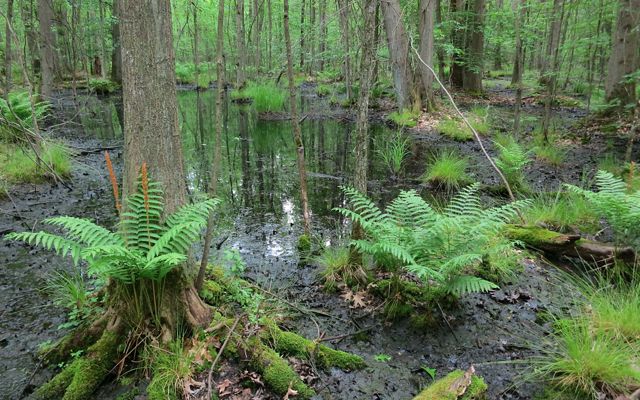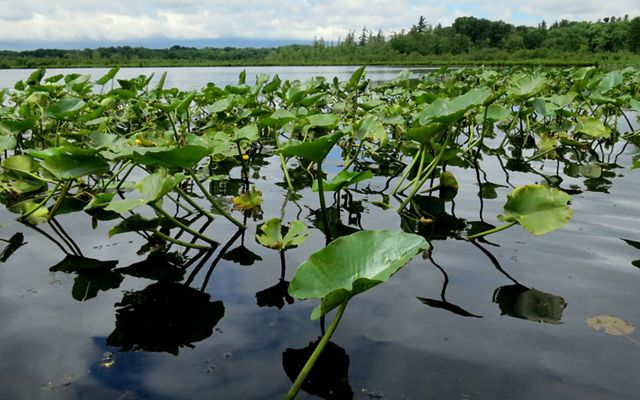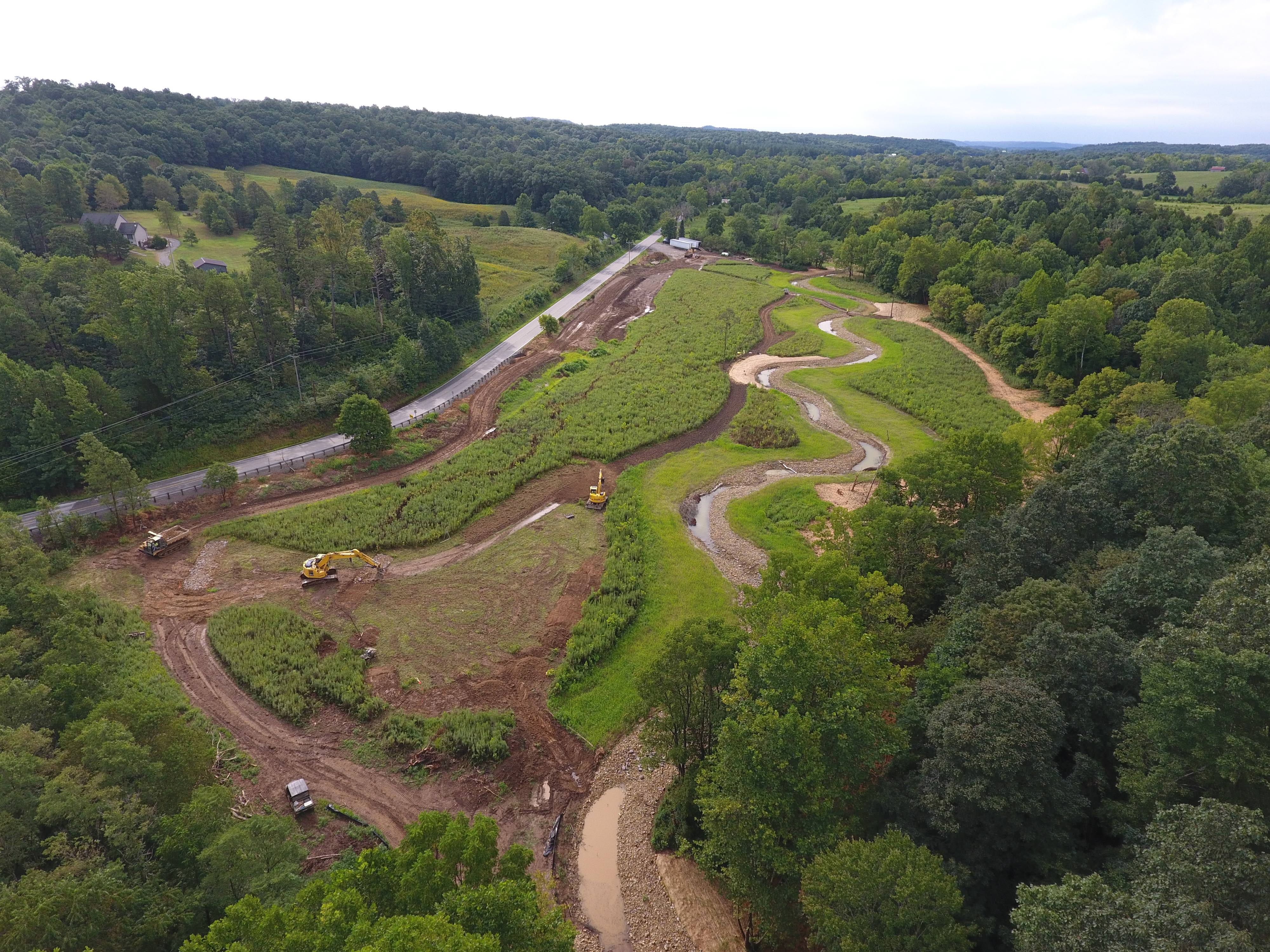Getting our Feet Wet
Restoring and connecting wetlands is key to our protection strategy.
A Blanding's Turtle's Journey
In late 2014 a Blanding’s turtle made his appearance at Maumee State Forest. It was discovered that the micro-chipped animal had travelled a remarkable 17 miles since first being documented in 2007. It was originally seen at what is now Wiregrass Lake Metropark. Traveling that distance meant that it had successfully navigated through a predominantly suburban landscape.
“Although its exact route is unknown, it seems pretty likely that the turtle moved through our Kitty Todd Preserve and other nearby protected areas along his journey,” says The Nature Conservancy’s Ashlee Decker, a partnership specialist for the Green Ribbon Initiative.
Decker says the turtle’s feat demonstrates the value of partnerships like the Green Ribbon Initiative, which is working to preserve, restore and connect key natural areas in the Oak Openings region. The Oak Openings is a 1,300-square-mile region in northwest Ohio and southeast Michigan comprised of oak savanna and wet prairie—preferred habitat for the turtle.
Quote: Amy Holtshouse

“One-third of all threatened and endangered species and nearly all of the fish in the Great Lakes basin rely on wetlands.”
The Key to Successful Wetlands Protection
Protecting, connecting, and restoring habitat is critical in a state that’s lost 90 percent of its original wetlands, with most of the remainder suffering from degradation. In the case of Western Lake Erie Basin's wetlands and marshes, that number is estimated to be even higher.
“We need to be strategic and think about protecting wetlands in the right places and at a scale that will improve water quality, provide protection from flooding and create habitat,” says Amy Holtshouse, TNC's director of conservation in Ohio.
Through public funding programs like H2Ohio, TNC and partners are better able to do just that. TNC played an essential role in getting H2Ohio off the ground and is now bringing it to life through on-the-ground scientific mapping and targeted wetland restoration projects.
What’s at Stake in Northwest Ohio
As was evidenced with the Toledo-area water advisory of August 2014, water quality is nothing to take for granted—especially in the Western Lake Erie Basin, a highly agricultural region where excess nutrients from fertilizer runoff and urban areas are contributing to toxic algal blooms.
150 years ago, it was a different scene entirely, says Terry Seidel, TNC's director of protection in Ohio. “Historically, the Great Black Swamp of Northwest Ohio covered an area about two-thirds the size of Florida’s Everglades National Park, but early settlers drained much of the land,” Seidel says.
Included in the Great Black Swamp’s historical range is Irwin Wet Prairie. Once over 10 miles long, Irwin Wet Prairie played a pivotal role in slowing down and naturally treating waters that carried nutrients to Lake Erie. It also provided vital habitat for wildlife such as songbirds, waterfowl, amphibians and reptiles.
A largescale restoration project is underway by TNC and key partners to restore more of the historic Irwin Wet Prairie. The 280-acre "Sandhill Crane Wetlands" project aims to protect water quality and restore wildlife habitat by transforming the land back into a functioning wetland.
“The property was farmed for years,” says TNC's Natural Infrastructure Director, Alexis Sakas, “but much of it was frequently flooded and marginal for growing crops. It wants to be a wetland again and we are helping it do that. This project is part of our broader plan to restore thousands of additional acres of wetlands across the Western Lake Erie Basin. What we learn here will help inform those other efforts.”
The project's name also reflects an optimism that the land will again support nesting and foraging habitat for sandhill cranes, which have not successfully nested in Ohio's Oak Openings region in over 70 years.

Nourishing the Best of Northeast Ohio
While wetlands were drained in the northeast part of the state as well, they were spared the mass scale of destruction experienced in the northwest.
“Our Brown’s Lake Bog and Flatiron Lake Bog preserves protect two of the finest bogs in the state,” Seidel says. “And Herrick Fen and Beck Fen preserves are great examples of fen communities, which are similar to bogs because they have peat deposits, but different in that their water comes from groundwater-fed springs.”
The regional standout is perhaps the Grand River Lowlands in Trumbull and Ashtabula Counties, an expansive wetland complex that helps to protect the Grand River—Lake Erie’s healthiest tributary.
At more than 1,600 acres, TNC's Morgan Swamp Preserve is a centerpiece of the Lowlands region. TNC's first protection efforts started there in 1985, and the preserve continues to grow, most recently by a 150-acre tract purchased in 2015 that features a quarter mile of Grand River frontage, and was made possible through the Environmental Protection Agency’s Water Resource Restoration Sponsor Program (WRRSP).


Funding Protection Efforts
WRRSP is one of several programs that TNC relies on to implement much of its wetland protection work. Another is the Great Lakes Restoration Initiative.
In the last five years, the program has enabled TNC and its partners to enhance and restore 3,000 acres of coastal marsh, manage more than 5,000 acres of invasives, and restore more than 3,000 acres of Oak Openings habitat.
“We’re working not only on protected lands, but also with voluntary private landowners—so our reach is geographically widespread, but at the same time very targeted,” Brennan says.
Similarly, TNC's wetland mitigation program, launched in 2015, allows for much more prioritized wetland mitigation projects, and at scale not previously pursued.
“Large-scale restoration work that keeps the big picture in mind will protect wetlands in a meaningful way for future generations,” Brennan says. “But we can’t do it at a turtle’s pace.”
Restoring Streams and Wetlands Across the State
The Ohio In Lieu Fee Stream and Wetland Mitigation Program is in the final stages of its first large-scale effort at Strait Creek, a tributary of the Ohio River located in rural southern Ohio’s Brown County. The valley is being transformed from one dominated by straightened ditches and abandoned agricultural fields, to streams teeming with life that meander through abundant wetlands and riparian forest.
With your help we can have a clean, healthy, thriving Ohio.
There is still more to do, but we can't do it without you.



